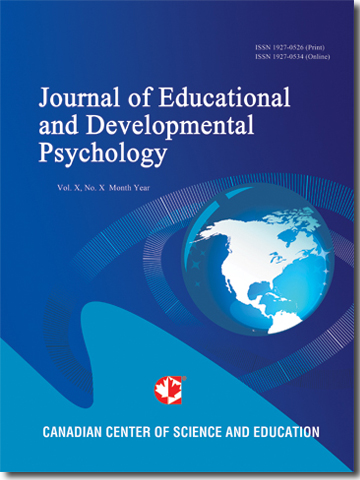The Factor Structure and Invariance of an Observational Checklist to Measure Children’s Emergent Literacy Skill Development across Male and Female Samples
- Jason Immekus
Abstract
Study purpose was to test the factor structure of the Jumpstart School Success Checklist (JSSC) and tests its measurement invariance (factor structure similarity) across male and female samples, based on national Jumpstart data (N = 5,545). Factor analytic results supported conceptualizing the JSSC item-level data in terms of a bifactor model (Gibbons & Hedeker, 1992), where each scale item related to a primary factor (Literacy) in addition to one sub-domain: Language Arts or Social Relationships. A comparison of the equivalence of the JSSC factor structure across sex groups indicated that the scale’s factor structure met partial measurement invariance (Bryne, Shavelson, & Muthén, 1989). A follow-up latent means structure analysis reported that females had slightly higher latent means across the factors than males. Study implications pertain to (a) the degree to which the JSSC scores function across sex groups, and (b) how factorial invariance research can be used to examine raters’ assessment of students’ literacy skill development.- Full Text:
 PDF
PDF
- DOI:10.5539/jedp.v3n1p101
Journal Metrics
(The data was calculated based on Google Scholar Citations)
1. Google-based Impact Factor (2021): 1.11
2. h-index (December 2021): 29
3. i10-index (December 2021): 87
4. h5-index (December 2021): N/A
5. h5-median (December 2021): N/A
Index
- Academic Journals Database
- CNKI Scholar
- Copyright Clearance Center
- CrossRef
- Elektronische Zeitschriftenbibliothek (EZB)
- EuroPub Database
- Excellence in Research for Australia (ERA)
- Harvard Library
- Jisc Library Hub Discover
- JournalSeek
- JournalTOCs
- LIVIVO (ZB MED)
- LOCKSS
- MIAR
- Open Access Journals Search Engine(OAJSE)
- PKP Open Archives Harvester
- Publons
- ROAD
- Scilit
- SHERPA/RoMEO
- Standard Periodical Directory
- Stanford Libraries
- Technische Informationsbibliothek (TIB)
- UCR Library
- UoB Library
- WorldCat
- Zeitschriften Daten Bank (ZDB)
Contact
- Carol WongEditorial Assistant
- jedp@ccsenet.org
